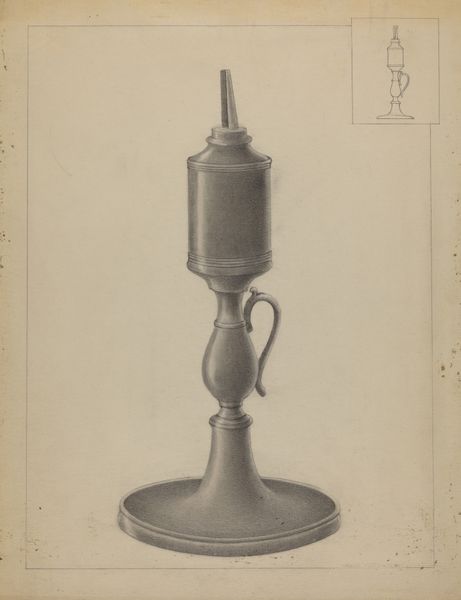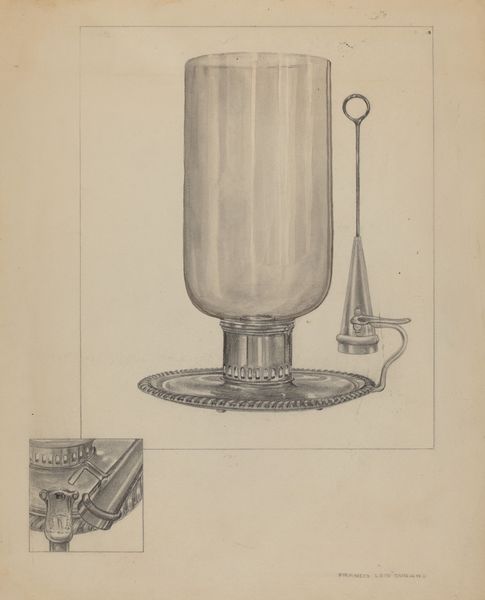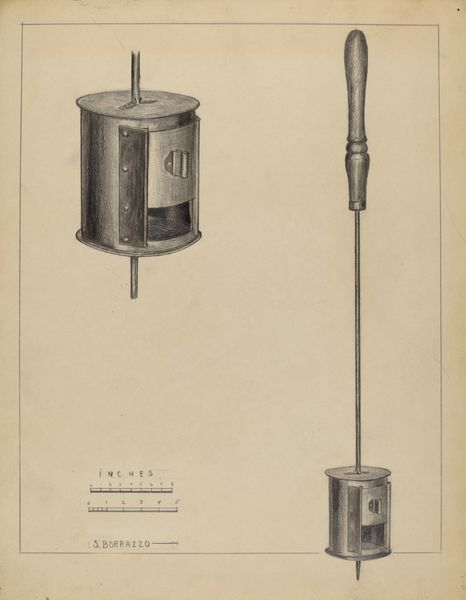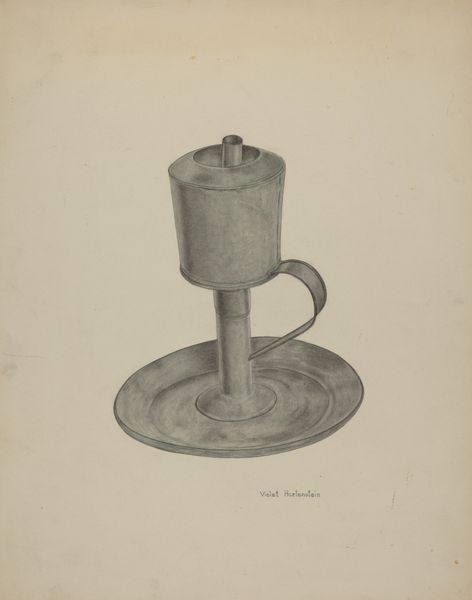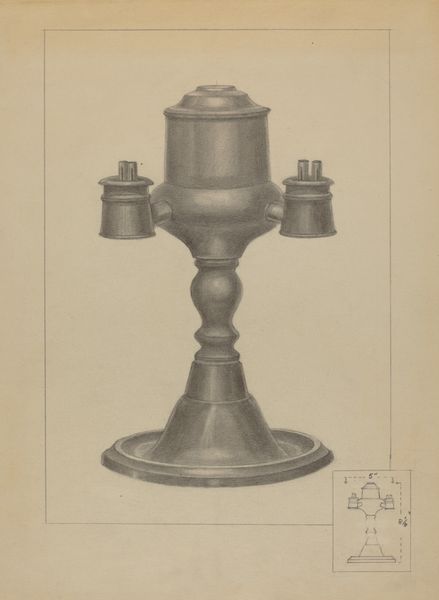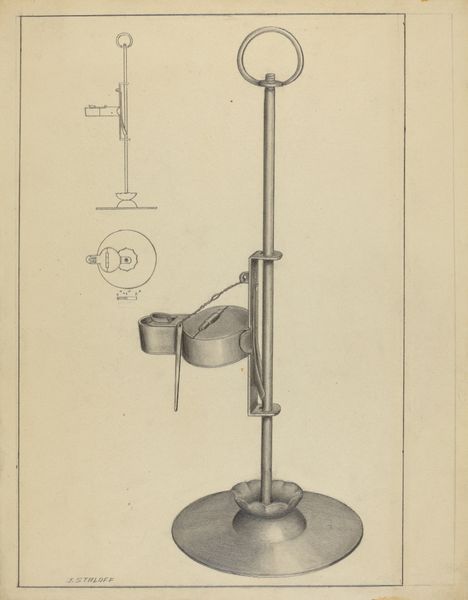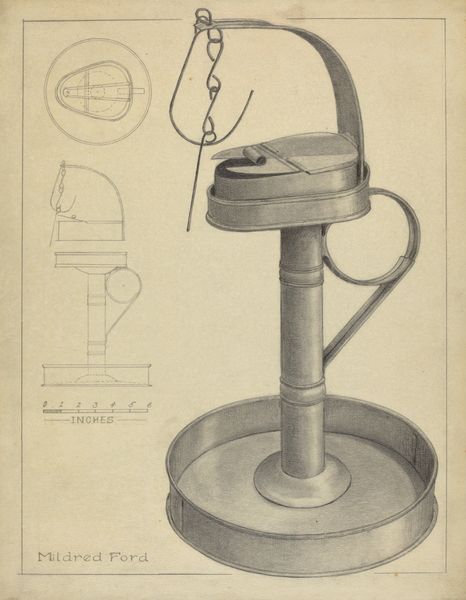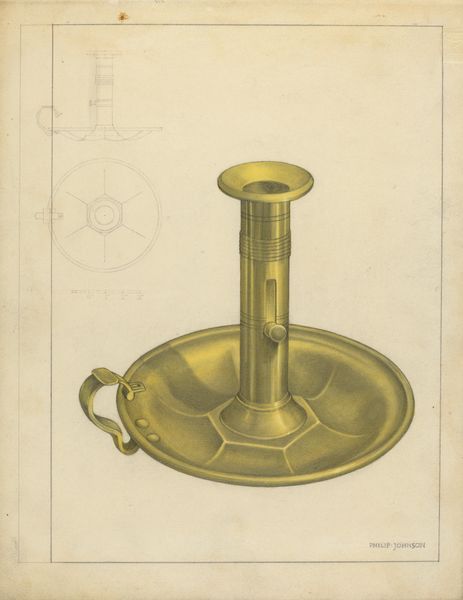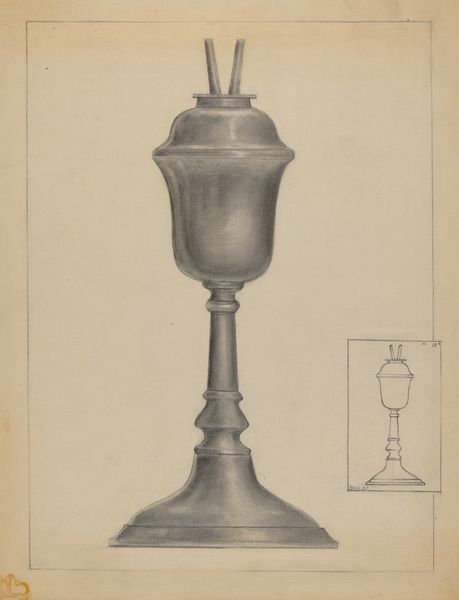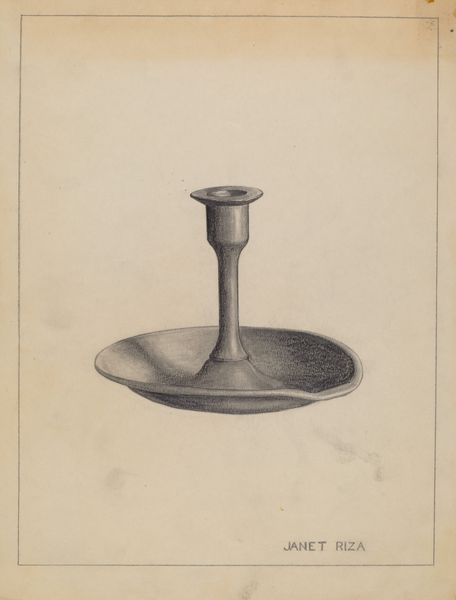
drawing, pencil
#
pencil drawn
#
drawing
#
charcoal drawing
#
figuration
#
form
#
pencil drawing
#
pencil
#
line
#
portrait drawing
#
academic-art
#
realism
Dimensions: overall: 30.8 x 22.8 cm (12 1/8 x 9 in.) Original IAD Object: 7" high; 6" wide
Copyright: National Gallery of Art: CC0 1.0
Editor: This is Hester Duany's "Lamp," created around 1936, using pencil and charcoal. The lamp is rendered so realistically, but somehow it feels detached, like a technical illustration. What do you see in this drawing? Curator: For me, this isn't simply a depiction of a lamp, but an index of industrial processes and material culture during the 1930s. The very fact that Duany chose to depict a commonplace, manufactured object invites us to consider its means of production and its role in the domestic sphere. How accessible were these lamps, who produced them, and under what conditions? Editor: So, you're saying it's less about the light the lamp provides, and more about the labor behind its creation? Curator: Precisely. Think about the materials: metal, likely mass-produced. How did these materials shape the lamp's design, and vice-versa? The lamp represents the culmination of resources extracted, fabricated, and ultimately consumed. Consider also the supplementary sketches. Editor: The diagrammatic sketches? What do they tell us? Curator: They almost read like technical drawings. Highlighting the lamp’s structure reveals a preoccupation with form, function, and the underlying engineering principles involved. This is no romantic still life; it's an exploration of manufactured objects. The depiction invites the question, where would one typically use such a light and who would rely on this source? Editor: That’s fascinating! I hadn't considered how much this drawing reveals about the industrial processes of the time. It makes me wonder about the other objects Duany chose to draw and what they tell us about the social and economic context. Curator: Indeed. By interrogating the materiality and the means of production, we shift our understanding from mere aesthetics to broader socio-economic conditions and even, maybe, ecological costs.
Comments
No comments
Be the first to comment and join the conversation on the ultimate creative platform.

